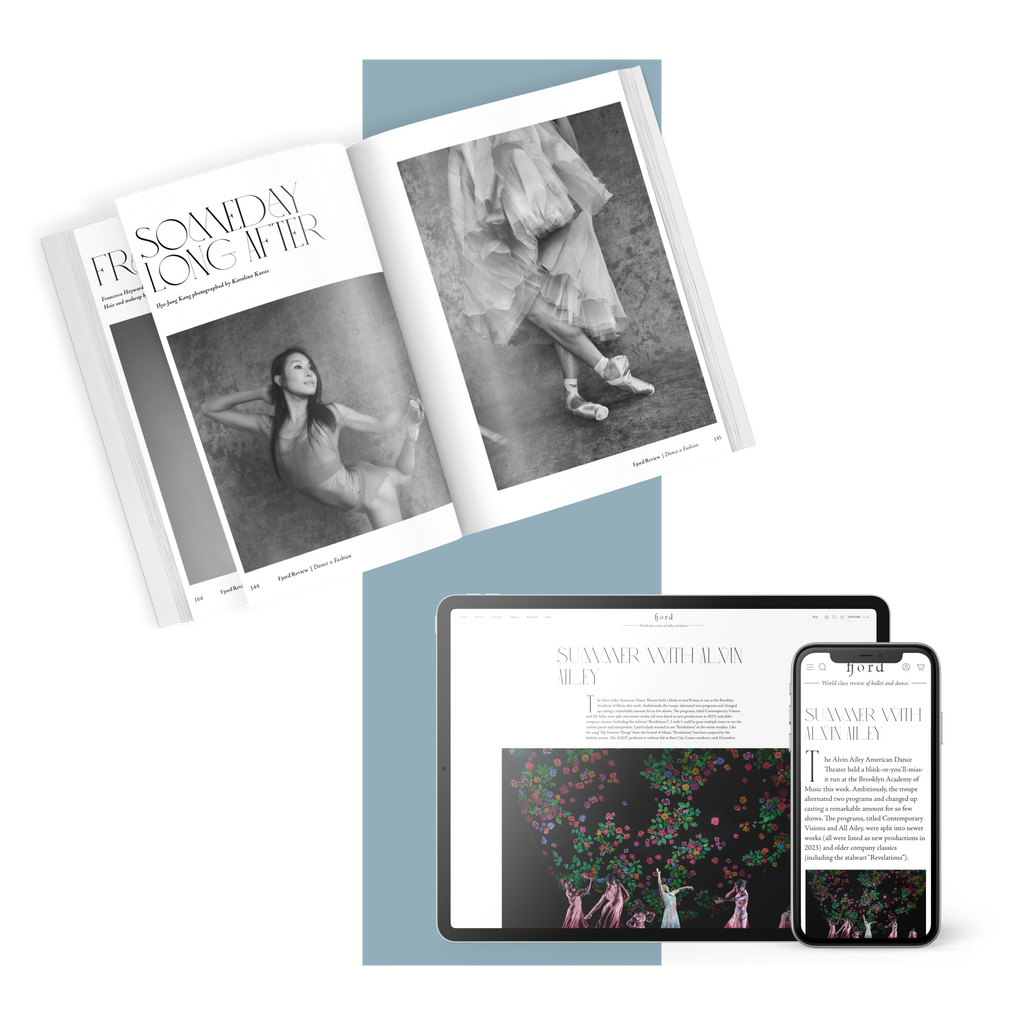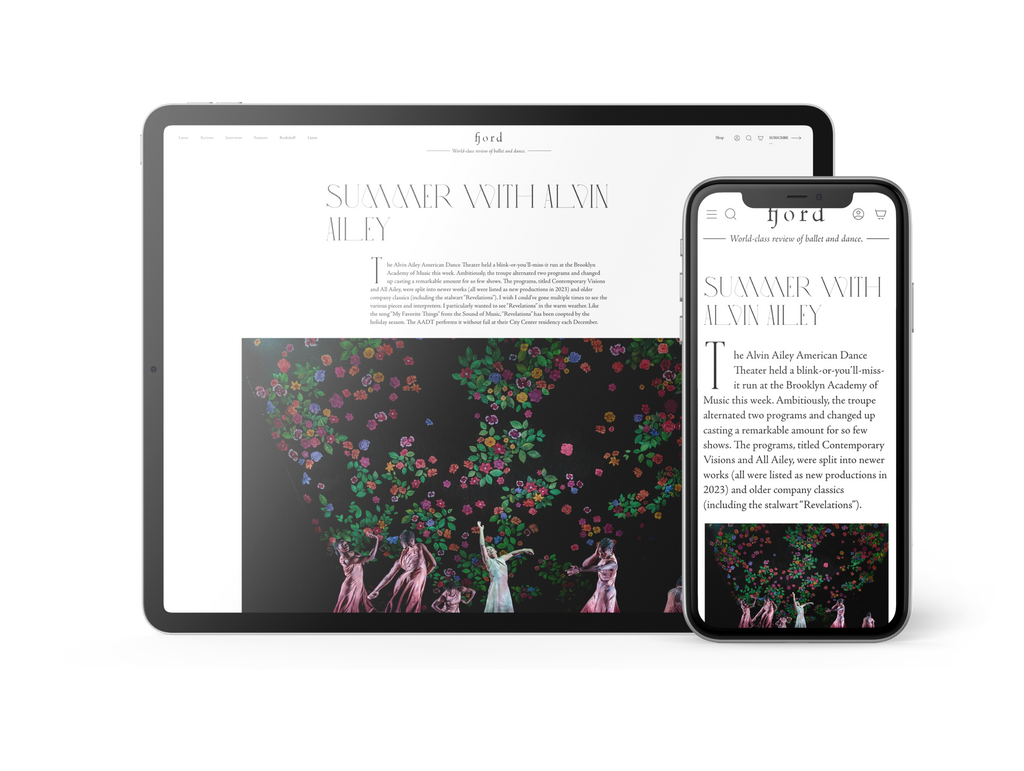Spellbound
Two performers crawl in on hands and knees wearing neon green, hooded coveralls—the lightweight papery kind made for working in a sterile environment—and clusters of balloons pinned to their backs.
Continue Reading
World-class review of ballet and dance.
Long before statistics and news, murder ballads were a staple of European folk songs and traveled here with immigrants. Dylan, Joan Baez and a lot of Appalachian singers sung them. One of the most famous in the 1950s was “Tom Dooley.” But I remember hearing somewhere along the way, “Oh, listen to my story, I'll tell you no lies, How John Lewis did murder poor little Omie Wise.” It’s the folktale of the early 19th Century murder of Naomi Wise. You can hear the tune and others deconstructed in Bryce Dessner’s original score, Murder Ballades, recorded by Eighth Blackbird. Resident choreographer of New York City Ballet, Justin Peck set his 2013 work of the same name on Benjamin Millepied’s L.A. Dance Project. It was one of three Philadelphia premieres on Annenberg Center Live’s winter dance series opener last weekend that introduced Millepied’s stellar company to Philadelphia.
Performance
Place
Words

Julia Eichten and Morgan Lugo in Justin Peck's “Murder Ballades.” Photograph by Laurent Philippe


“Uncommonly intelligent, substantial coverage.”
Your weekly source for world-class dance reviews, interviews, articles, and more.
Already a paid subscriber? Login
Two performers crawl in on hands and knees wearing neon green, hooded coveralls—the lightweight papery kind made for working in a sterile environment—and clusters of balloons pinned to their backs.
Continue ReadingWill Rawls makes boundaries visible by defying them. Known for the disciplinary and topical range of his projects, the choreographer, director, and performer approaches issues of representation in “[siccer],” a multi-part, multi-site work co-presented by L’Alliance New York’s Crossing the Line Festival. A live performance at Performance Space New York accompanies a multimedia installation at the Kitchen, a book published by Wendy’s Subway, and an album published by the artist. With a creative process reaching back to 2018, the work delves explicitly into pandemic-era energies and inertias with focused intimacy and a pervasive sense of instability.
Continue ReadingIt is always interesting when multiple theme steps emerge over the course of a mixed repertory evening, but it is uncanny on one featuring five different ballets, each with a different choreographer and composer, covering a twenty-year span (2005-2025).
Continue ReadingZvidance premiered its new work “Dandelion” mid-November at New York Live Arts. Founded by Zvi Gotheiner in 1989, Zvidance has been a steady presence in the New York contemporary dance scene, a reliable source of compositional integrity, and a magnet for wonderful dancers.
Continue Reading
comments